- Author: Ed Perry
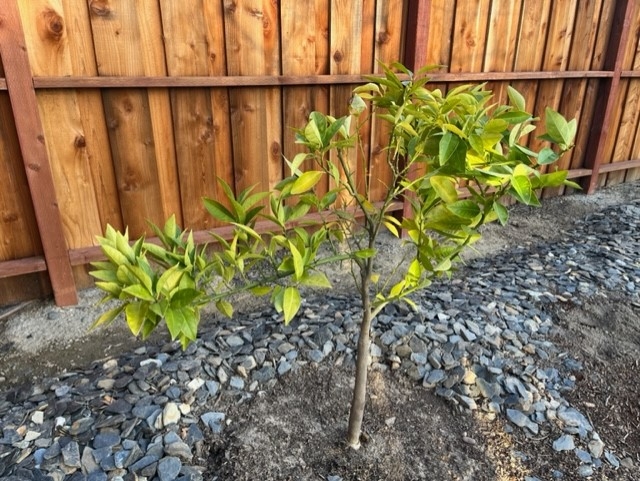
For many in California, the backyard orange or grapefruit tree is almost a member of the family, and any negative change in its appearance elicits concern. One such change in appearance is leaf yellowing and drop that often occurs during the winter in citrus. Citrus leaves can remain on the tree for as long as three years depending on tree vigor, but disease, inadequate or excessive nitrogen fertility, excessive salt or born in the soil, poor irrigation practices, freezing temperatures, pest pressures and low light levels significantly reduce leaf longevity. Excessive leaf drop during the growing season is more likely to indicate a serious problem than leaf drop during the winter. Winter leaf drop normally reflects nothing more than a momentary swing in the natural balance between the natural elimination of old senescing leaves and their replacement.
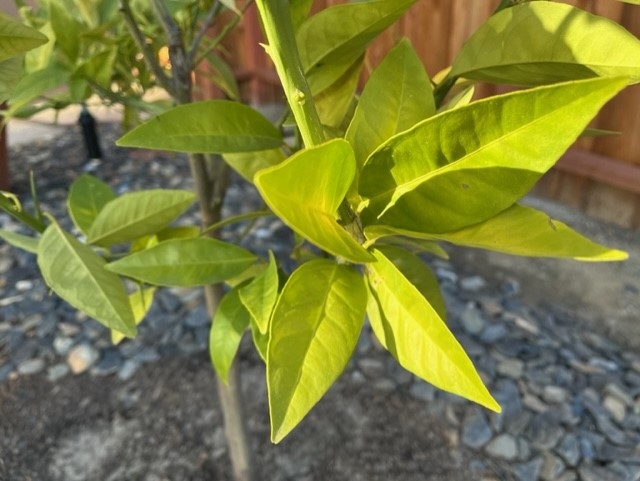
Reduce winter water applications to citrus trees that have defoliated or that have a significantly thinning canopy. Trees like this require little, if any, supplemental irrigation. Even a mature tree with a full leaf canopy will require less than 10% of the water that it would require during the summer.
The best indicator of tree health for a defoliating citrus tree during the winter will be how well it produces the first flush of new growth in the spring. A decision to keep or remove a citrus tree based on tree health should not be made during the winter. Even trees that lose most of their leaves during winter are capable of replacing leaf canopies with the spring flush of growth, usually with little loss in fruit production. Trees that do not produce a vigorous flush in early spring may have a more serious problem. March is an excellent month to begin applying fertilizer to encourage new leaf growth and fruit production and to help keep an old friend of the farm or family backyard around for years to come.
Ed Perry is the emeritus Environmental Horticultural Advisor for University of California Cooperative Extension (UCCE) in Stanislaus County where he worked for over 30 years.
- Author: Anne Schellman
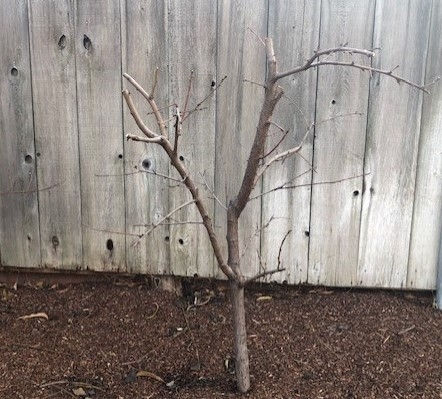
Why spray for peach leaf curl disease?
Right now, the fungus that causes leaf curl is present on your trees. Once spring arrives, its spores “move” via water droplets splashed onto developing leaves. When the environment is right, these spores invade newly developing leaves, growing in between leaf cells and causing distortion of cells.
Symptoms of peach leaf curl disease include puckering leaves that curl and turn a reddish color. Often the entire first set of leaves may drop off. When new leaves begin to grow, these leaves are also infested. Twigs and shoots distort and often die. Fruit is rarely affected. However, left untreated, nectarine and peach trees begin to decline and fruit production is substantially reduced.
Often when gardeners see symptoms of leaf curl disease on their tree, they are tempted to pull off the affected leaves, thinking this will help. Unfortunately, there is little to do at this point to control the disease.
Prevention
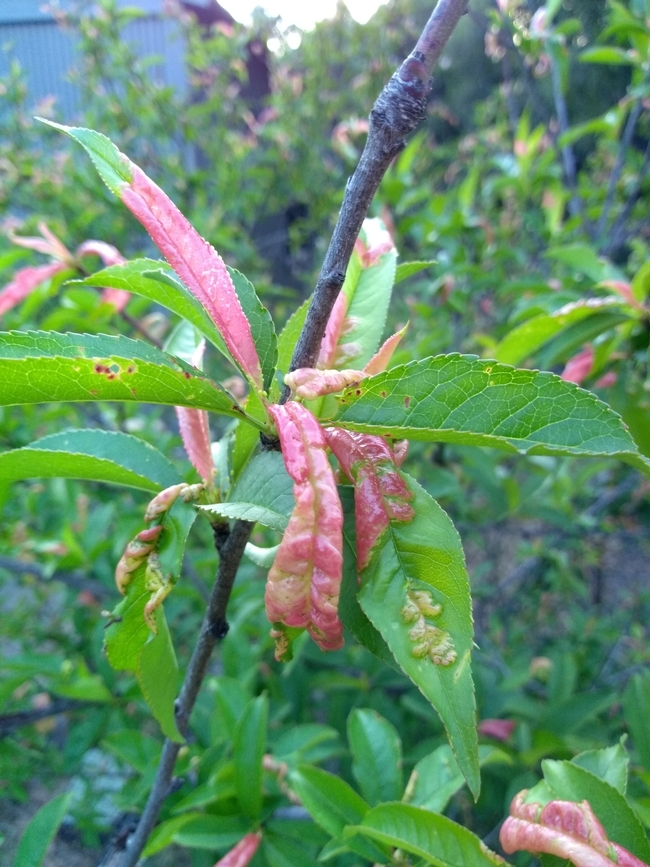
Using Pesticides
Insects, diseases, and weeds are pests, and products used to kill them are called pesticides. Whether a product is organic or not, it can still have an impact on you and/or the environment, so be sure to follow the directions on the product label regarding personal protection, correct mixing, and application. When spraying, make sure to coat the tree until the product is dripping off. Come spring, your peach and nectarine tree trees should leaf out and grow vigorously, followed by a healthy crop of fruit.
Learn more about peach leaf curl by visiting the UC IPM website and reading their Quick Tips on it at http://ipm.ucanr.edu/QT/peachleafcurlcard.html For more detailed information about this disease, read the Pest Notes at http://ipm.ucanr.edu/PMG/PESTNOTES/pn7426.html
Coming Soon
Bare root fruit trees are arriving in nurseries and garden centers. If you are thinking about planting fruit trees but aren't sure what to plant, how to plant, and how to care for them, you'll want to attend our online Bare Root Fruit Tree Planting and Pruning Class on January 25, 2022. More details coming next week.
If you have fruit trees that produce a lot of small fruit, you may be missing an important step in growing fruit trees called "thinning." Next month we'll publish an article on how and when to thin fruit from Ed Perry, retired UCCE Stanislaus County Emeritus Horticulture Advisor.
Anne Schellman is the UCCE Stanislaus County Master Gardener Program Coordinator.
- Author: Denise Godbout-Avant

Seasonal Landscape IPM Checklist for Home Gardeners
UC's Integrated Pest Management (IPM) Home, Garden, Turf and Landscape Pests Quick Link has a Seasonal Landscape IPM Checklist which is a wonderful resource with monthly checklists within your selected county/region to help guide you how to keep your landscapes healthy.
https://www2.ipm.ucanr.edu/landscapechecklist/
Topics include common pest problems to look out for, preventative measures, and links to more information. You can also subscribe to receive an automated monthly list by email.
December and January Lists
I reviewed the December and January checklists for Stanislaus County. The following are some topics listed and additional appropriate links:
- Frost – Temperatures sometimes drop to freezing during the winter months. Cold temperature can kill bark, buds, flowers, and shoots, so protect sensitive plants from frost. To increase a soil's ability to absorb heat rake away mulch to expose the ground around the base of the plant. If frost is expected irrigate the soil (if there hasn't been any rain recently) at least three days prior. You can also cover sensitive plants overnight with cloth or similar material other than plastic but leave covers open at the bottom so heat from soil can help warm plants and remove covers during the daytime. http://ipm.ucanr.edu/PMG/GARDEN/ENVIRON/frostdamage.html
- Irrigation – Always adjust your watering schedule according to the weather. We have had a very wet December, which followed an atmospheric river storm in October. So, gardens have needed little to no irrigation lately, depending on your soil type. Overirrigation can lead to root rot. Resume irrigation if storms diminish during the remainder of the winter (let's hope it remains wet!). If there is an extended dry spell during upcoming winter months, irrigate infrequently and deeply. http://ipm.ucanr.edu/homegarden/irrigating/
- Clean up – Remove old fruit and nuts in and under trees to avoid harboring pests. Also rake up fallen leaves beneath deciduous fruit trees and roses (but leave the leaves elsewhere in your yard for beneficial overwintering insects including butterflies and bees). http://ipm.ucanr.edu/PMG/GARDEN/FRUIT/CULTURAL/sanitation.html
- Prune – Trees and shrubs that need pruning including apple, crepe myrtle, pear, rose, spirea, and stone fruits (exception are apricot and cherry trees which can harbor certain pests, i.e. shothole borer, which should be pruned in the summer). Remove dead and diseased wood. http://ipm.ucanr.edu/homegarden/pruning/
- Mistletoe – Mistletoes are parasitic plants that absorb nutrients and water from a host tree. Healthy trees can tolerate a few branches infected with mistletoe, but a heavy infestation could ultimately kill a tree, particularly if the tree is stressed or unhealthy. With leaves having dropped during fall months from deciduous trees, mistletoe is visible on the now-bare trees, and thus can be removed easily. Remove branches at least a foot below the mistletoe attachment before it produces seeds that will infest other limbs and trees. Since mistletoe often infects many trees on the same street, a neighborhood effort to remove all mistletoe from any trees on the block will help reduce continued spread in the area. http://ipm.ucanr.edu/QT/mistletoecard.html
- Peach leaf curl –If leaf curl has been an issue on your peach or nectarine plants apply preventive spray once or more times until bud break. http://ipm.ucanr.edu/QT/peachleafcurlcard.html
- Bare root plants – Now is the time to plant bare root deciduous trees, shrubs, and vines, including roses, fruit, nuts and grapes. Select species and cultivars that are appropriate for the site it is being planted. http://ipm.ucanr.edu/homegarden/planting/
This compilation is a partial overview of the lists I reviewed. Check out the January seasonal landscape checklist for your area to see which tasks you need to do. Then bundle up, get your garden tools, and go outside (preferably on a sunny day!) to do the necessary winter maintenance chores in your garden. You and your landscape will be rewarded for your cold weather efforts come spring.
Denise Godbout-Avant has been a UCCE Stanislaus County Master Gardener since July 2020.
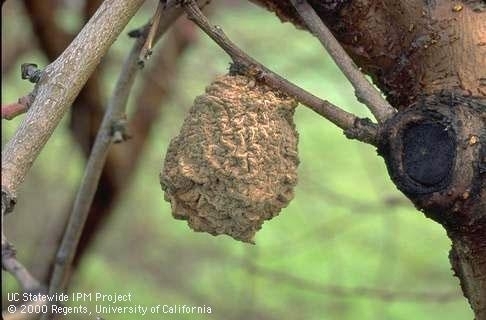
- Author: Terry Pellegrini

Planning your garden now, I feel, will save you headaches and money, come spring. By taking the time to understand how much space you have (or don't have), whether or not you wish to plant directly in ground or containers, or a combination thereof, and what types of plants grow best in your area, you'll only purchase what you need. In addition, you can decide whether or not you wish to devote the time to starting your seeds indoors or in a greenhouse, plant the seeds directly in the garden beds, or if transplants are the way you wish to go.

If you are thinking of planting spring veggies, take under consideration what you and your family will actually eat. If the kids detest string beans, then planting a huge area full of them is probably not a good use of the space, your time, or money. However, if zucchini is something you eat frequently, then two mounds may serve you better than one.
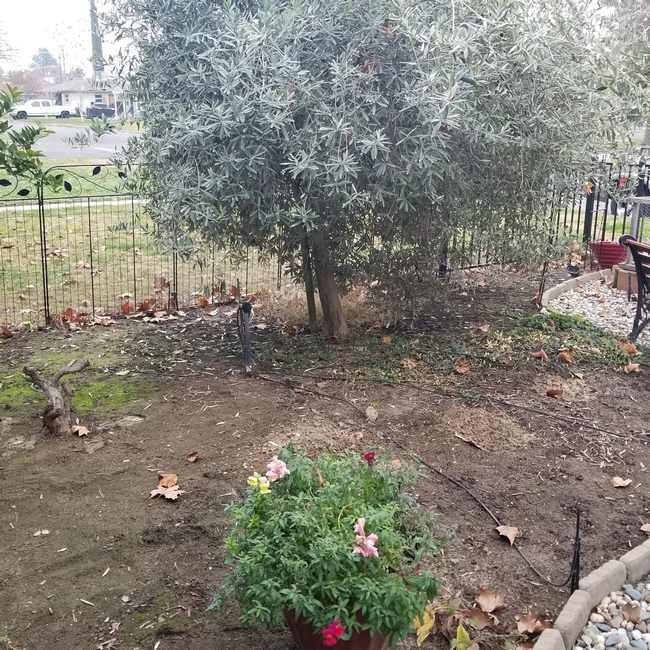
Now is also a good time to get control of any weeds in your proposed planting areas. Removing any weeds now, before the weather gets warmer and they decide to seed, means less work for you come spring and summer. I like to get down, move the soil with a trowel, and pull out any stray roots or seeds that I see. You may even find grubs and larvae of Hoplia beetles that you can remove, saving your precious roses and flowers this spring.
Many of us reuse our favorite pots and containers year after year. As such, these pots will need some TLC and prep as well. All the old soil will need to be removed and the pot cleaned with a solution of one-part bleach to nine parts water. Submerge in solution and soak for at least 10 minutes. This sterilizes them, removing any insects or diseases from the previous plant in the pot.
Planning and prepping your garden now for your spring planting will give you that head start to a successful, satisfying, and fun gardening adventure. So, get out your seed catalogs, notebook, and take a walk in your yard or garden space, and imagine all the possibilities. Happy Gardening!
- Author: Denise Godbout-Avant
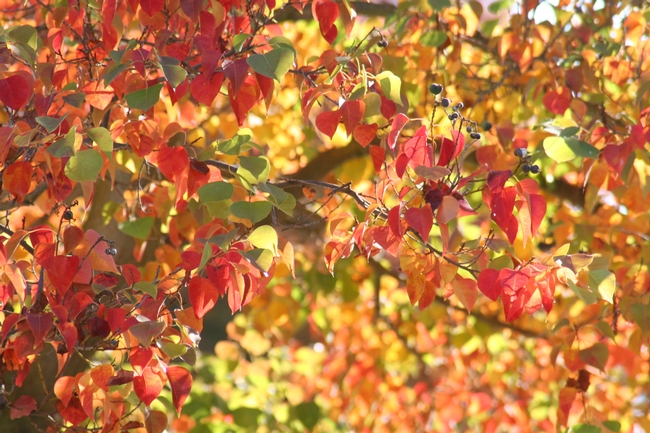
Why do some trees change color and drop their leaves before winter? And why are there different colors?
Leaves are colored by pigment molecules. Most leaves appear green because they contain an abundance of the pigment chlorophyll. Chlorophyll is the site of photosynthesis where the sun's energy is converted into the carbohydrates that are plants' food source. During the cold winter months when there is less sunlight, it would take too much energy for some trees to keep their leaves healthy. So deciduous trees lose their leaves for the winter. Evergreen trees have a different strategy for dealing with winter's challenges (which is a topic for another time!).
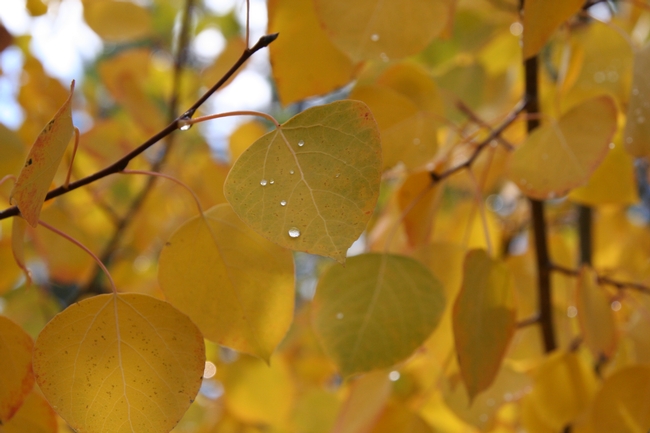
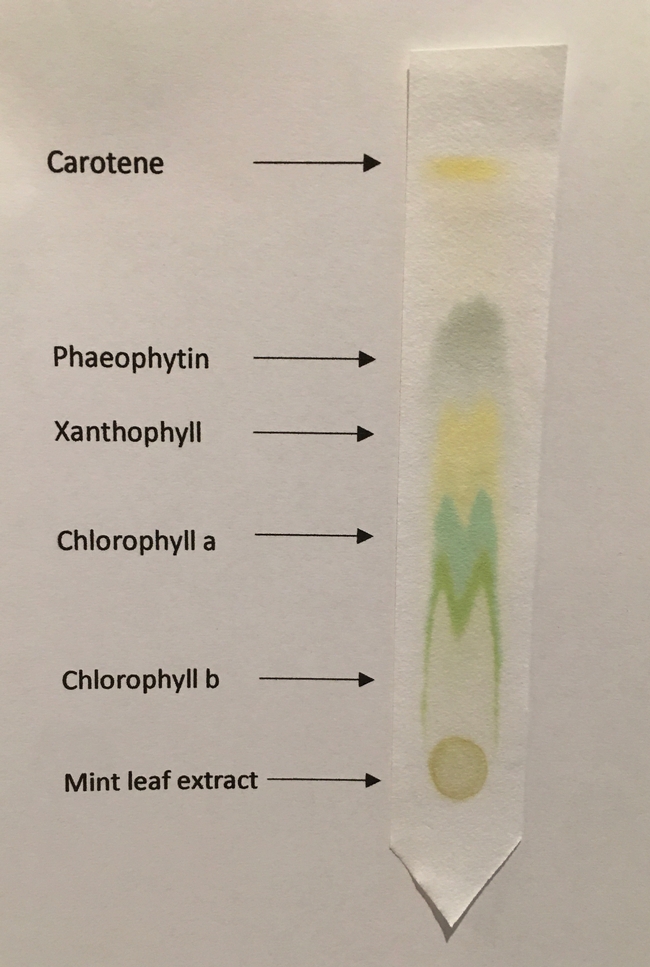
Elevation, latitude and weather all affect the timing and intensity of fall colors. Higher elevations and northern latitudes produce earlier autumn colors in trees. In general, autumn weather with lots of sunny days, dry weather, and cold, frostless nights will produce the most vibrant palette of fall colors. Some trees that can produce vivid colors include maples, gingkos, aspen, birches, Japanese maples, liquidamber, cherry, redbud, Chinese pistache, and dogwood.
In the Central Valley we usually don't get the glorious colors like the Sierra Mountains or the east coast, but we do get some color which usually starts in early November. So, enjoy the autumn jewels since it occurs only for a brief period each fall!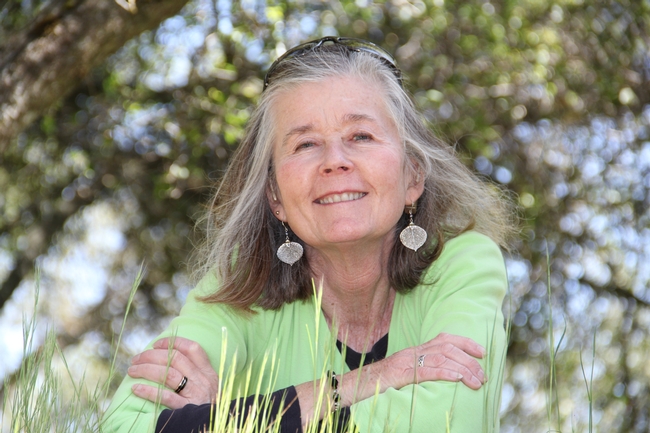
Denise Godbout-Avant has been a UCCE Stanislaus County Master Gardener since July 2020.

